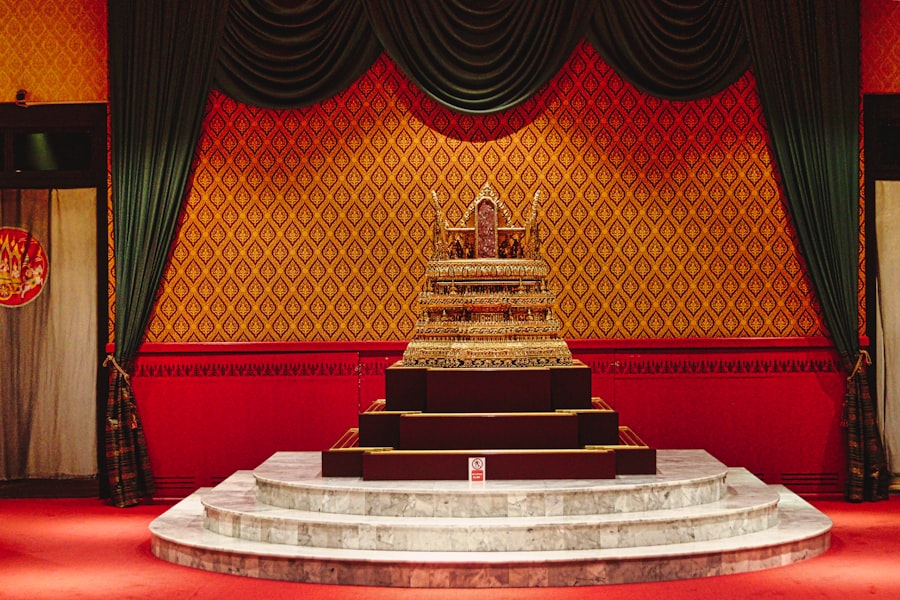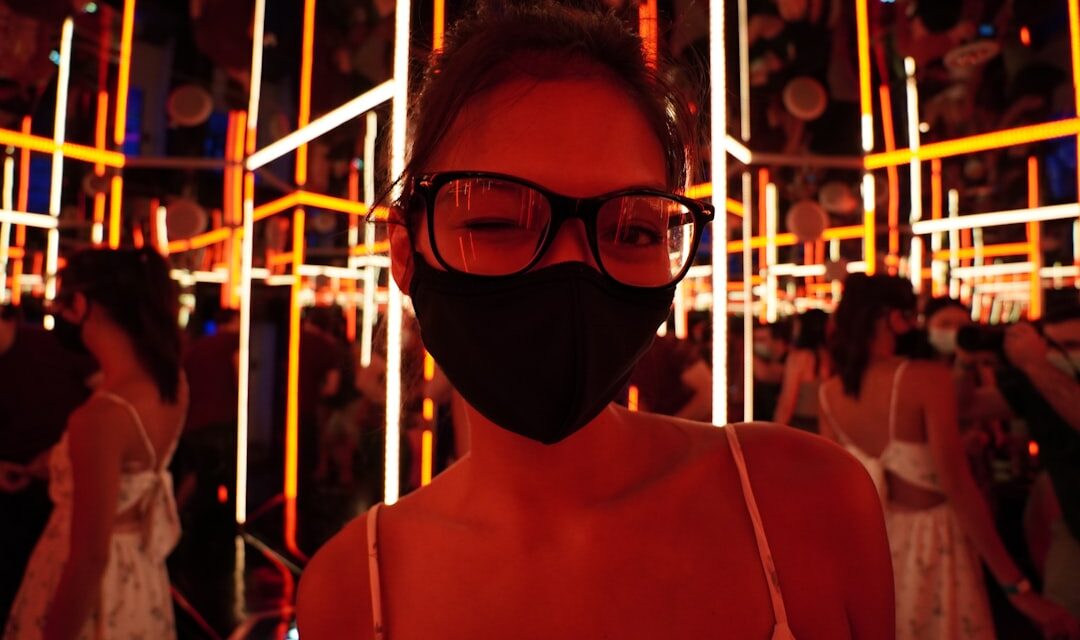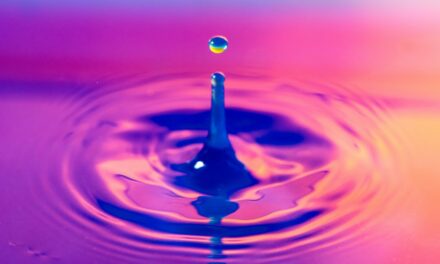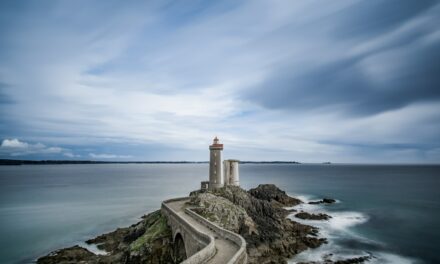Installation art is a form of contemporary art that is immersive and experiential, often occupying an entire space or environment. It is a three-dimensional artwork created to transform the perception of a space and engage the viewer in a unique manner. Installation art can incorporate a wide range of materials and media, including sculpture, light, sound, video and found objects.
It is frequently site-specific, meaning it is designed to be experienced in a particular location and is influenced by the architectural, cultural or historical context of that space. Installation art challenges traditional notions of art by breaking away from the confines of a canvas or plinth and inviting the viewer to physically interact with the artwork. It blurs the boundaries between art and life, creating an environment that encourages the viewer to become an active participant in the artistic experience.
Installation art can evoke a wide range of emotions and sensations, from awe and wonder to discomfort and unease, as it immerses the viewer in a new and often unexpected environment.
Summary
- Installation art is a form of contemporary art that involves the arrangement of objects in a space to create an immersive and often site-specific experience for the viewer.
- Installation art has its roots in the 20th century avant-garde movements, particularly Dada and Surrealism, and gained prominence in the 1960s and 1970s as a reaction against traditional art forms.
- Key artists and movements in installation art include Marcel Duchamp, Yayoi Kusama, and the Fluxus movement, each contributing to the development and evolution of the art form.
- Types of installations range from immersive environments and interactive installations to temporary and permanent public art installations, each offering unique ways for viewers to engage with the artwork.
- The process of creating installation art involves careful consideration of the space, materials, and concept, often requiring collaboration with architects, engineers, and other professionals to bring the artist’s vision to life. Installation art has had a significant impact on the art world, challenging traditional notions of art and expanding the possibilities for artistic expression. Its importance lies in its ability to provoke thought, evoke emotion, and create memorable experiences for viewers. The future of installation art is likely to continue pushing boundaries and exploring new technologies, materials, and concepts to create even more immersive and impactful experiences for audiences.
The History of Installation Art
The Early Experimentation
However, it was not until the 1960s and 1970s that installation art truly came into its own as a distinct and influential art form.
The Rise of Immersive Installations
During this time, artists such as Allan Kaprow, Yayoi Kusama, and Christo began creating large-scale, immersive installations that transformed gallery spaces and public environments. These artists sought to break down the barriers between art and life, creating environments that were meant to be experienced rather than simply observed.
A Shift Towards Experiential Art
The rise of installation art coincided with a broader cultural shift towards experiential and participatory forms of art, as well as a growing interest in environmental and site-specific art practices.
Key Artists and Movements in Installation Art

One of the most influential movements in the history of installation art is Earthworks, also known as Land Art, which emerged in the late 1960s and early 1970s. Artists such as Robert Smithson, Nancy Holt, and Michael Heizer created monumental earthworks that were designed to exist in harmony with the natural landscape, challenging traditional notions of art and the gallery space. These artists sought to create works that were inseparable from their environment, blurring the boundaries between art and nature.
Another key figure in the development of installation art is Yayoi Kusama, whose immersive and hallucinatory installations have captivated audiences around the world. Kusama’s use of mirrors, lights, and repetitive patterns creates a sense of infinity and disorientation, inviting viewers to lose themselves in her otherworldly environments. Her work has had a profound influence on contemporary installation artists and has helped to popularize the use of immersive experiences in art.
More recently, artists such as Olafur Eliasson and Anish Kapoor have continued to push the boundaries of installation art, creating large-scale works that engage with issues of perception, space, and the environment. Eliasson’s use of light, colour, and natural elements creates immersive experiences that challenge our understanding of the world around us, while Kapoor’s monumental sculptures play with scale and materiality to create awe-inspiring environments.
Types of Installations
There are several different types of installations that artists can create, each with its own unique characteristics and challenges. Site-specific installations are designed to be experienced in a particular location and are often influenced by the architectural, cultural, or historical context of that space. These installations can transform the perception of a space and engage the viewer in a unique way, creating an immersive experience that is inseparable from its environment.
Interactive installations invite the viewer to become an active participant in the artistic experience, often through the use of technology or physical interaction. These installations can incorporate elements such as sound, light, video, or motion sensors to create a dynamic and engaging experience that responds to the presence or actions of the viewer. Interactive installations blur the boundaries between art and life, inviting the viewer to physically engage with the artwork in new and unexpected ways.
Temporary installations are designed to exist for a limited period of time, often as part of a specific exhibition or event. These installations can take many forms, from large-scale public artworks to intimate gallery installations, and are often created using materials that are impermanent or easily dismantled. Temporary installations challenge traditional notions of permanence in art, creating experiences that are fleeting and ephemeral.
The Process of Creating Installation Art
The process of creating installation art is often complex and multifaceted, requiring careful planning, collaboration, and technical expertise. The first step in creating an installation is conceptualizing the idea and developing a clear vision for how the artwork will interact with its environment. This may involve research into the architectural, cultural, or historical context of the space, as well as consideration of how the installation will engage with issues such as scale, materiality, and audience interaction.
Once the concept has been developed, artists must consider the practical aspects of bringing their vision to life. This may involve sourcing materials and resources, securing permissions for site-specific installations, and collaborating with technicians or fabricators to realize their ideas. The creation of an installation often involves a combination of traditional artistic techniques such as sculpture or painting, as well as more technical skills such as lighting design or audio engineering.
The installation process culminates in the physical realization of the artwork within its designated space. This may involve careful placement and arrangement of elements within the environment, as well as testing and refining aspects such as lighting, sound, or interactive components. The final result is an immersive and experiential artwork that challenges traditional notions of art and invites viewers to engage with their surroundings in new and unexpected ways.
The Impact and Importance of Installation Art

The Democratization of Art
By breaking away from the confines of a canvas or pedestal, installation art creates immersive environments that invite viewers to become active participants in the artistic experience. This has helped to democratise art by making it more accessible and inclusive, reaching audiences who may not typically engage with traditional forms of art.
Provoking Thought and Emotion
Installation art also has the power to provoke thought and evoke emotion in ways that traditional artworks may not. By creating environments that are meant to be experienced rather than simply observed, installation artists can engage with issues such as identity, memory, politics, or social justice in powerful and evocative ways. This has helped to expand the scope of contemporary art practice by encouraging artists to explore new forms of expression and engage with pressing social issues.
Challenging Our Understanding of Space and Perception
Furthermore, installation art has played a key role in expanding our understanding of space and perception. By transforming the perception of a space through scale, materiality, light, sound, or interactive elements, installation artists challenge viewers to reconsider their relationship to their surroundings. This has helped to push the boundaries of artistic practice by engaging with issues such as architecture, urban planning, and environmental sustainability.
The Future of Installation Art
The future of installation art is likely to be shaped by ongoing technological advancements and a growing interest in immersive experiences. As new technologies such as virtual reality and augmented reality continue to develop, artists will have new tools at their disposal for creating immersive and interactive installations that challenge our understanding of space and perception. This may open up new possibilities for creating artworks that exist beyond physical constraints or engage with audiences in new and unexpected ways.
Furthermore, there is likely to be continued interest in site-specific installations that engage with issues such as architecture, urban planning, or environmental sustainability. As our understanding of these issues continues to evolve, artists will have new opportunities to create installations that respond to pressing social or environmental concerns. This may lead to a greater emphasis on creating artworks that are not only visually striking but also engage with issues such as climate change, social justice, or community engagement.
Overall, installation art is likely to continue to play a key role in shaping contemporary art practice by challenging traditional notions of artistic expression and engaging audiences in new and unexpected ways. As artists continue to push the boundaries of what is possible within this medium, we can expect to see new forms of expression emerge that challenge our understanding of space, perception, and artistic experience.
If you are interested in learning more about different art movements, you may want to check out an introduction to Cubism. This article explores the origins and key characteristics of this influential artistic style, which emerged in the early 20th century. https://thinkofart.com/cubism/ It provides a fascinating insight into how artists such as Pablo Picasso and Georges Braque revolutionised the way we perceive and represent the world through their fragmented and abstract compositions. Understanding the context and techniques of Cubism can deepen your appreciation for installation art and its place within the broader history of art.
FAQs
What is installation art?
Installation art is a genre of contemporary art that involves the arrangement of objects in a specific space to create an immersive and often site-specific experience for the viewer. It can include a wide range of materials and techniques, such as sculpture, video, sound, and found objects.
When did installation art first emerge?
Installation art first emerged in the 1960s and 1970s as a response to the traditional boundaries of art forms. Artists sought to break free from the confines of the gallery space and create more interactive and experiential works.
What are some famous examples of installation art?
Some famous examples of installation art include “The Weather Project” by Olafur Eliasson at the Tate Modern in London, “The Dinner Party” by Judy Chicago at the Brooklyn Museum, and “Sunflower Seeds” by Ai Weiwei at the Tate Modern.
How is installation art different from traditional art forms?
Installation art differs from traditional art forms in that it often involves the use of three-dimensional space and requires the viewer to physically engage with the artwork. It also challenges the notion of a static, framed artwork by creating an environment that the viewer can move through and interact with.
What is the purpose of installation art?
The purpose of installation art is to create a unique and immersive experience for the viewer, often addressing social, political, or environmental issues. It can also challenge the traditional boundaries of art and encourage viewers to question their perceptions and assumptions.




